请我喝杯咖啡☕
*我的帖子解释了移动 mnist。
movingmnist() 可以使用 moving mnist 数据集,如下所示:
*备忘录:
- 第一个参数是 root(必需类型:str 或 pathlib.path)。 *绝对或相对路径都是可能的。
- 第二个参数是 split(optional-default:none-type:str): *备注:
- 没有,可以设置“trn”或“test”。
- 如果为 none,则返回每个视频的所有 20 帧(图像),忽略 split_ratio。
- 第三个参数是 split_ratio(optional-default:10-type:int): *备注:
- 如果 split 为“train”,则返回 data[:, :split_ratio]。
- 如果 split 为“test”,则返回 data[:, split_ratio:]。
- 如果 split 为 none,则忽略它。 忽略 split_ratio。
- 第四个参数是transform(optional-default:none-type:callable)。
- 第五个参数是 download(optional-default:false-type:bool): *备注:
- 如果为 true,则数据集将从互联网下载到 root。
- 如果为 true 并且数据集已下载,则将其提取。
- 如果为 true 并且数据集已下载,则不会发生任何事情。
- 如果数据集已经下载,则应该为 false,因为它速度更快。
- 您可以从此处手动下载并提取数据集,例如数据/移动mnist/。
from torchvision.datasets import movingmnist all_data = movingmnist( root="data" ) all_data = movingmnist( root="data", split=none, split_ratio=10, download=false, transform=none ) train_data = movingmnist( root="data", split="train" ) test_data = movingmnist( root="data", split="test" ) len(all_data), len(train_data), len(test_data) # (10000, 10000, 10000) len(all_data[0]), len(train_data[0]), len(test_data[0]) # (20, 10, 10) all_data # dataset movingmnist # number of datapoints: 10000 # root location: data all_data.root # 'data' print(all_data.split) # none all_data.split_ratio # 10 all_data.download # <bound method movingmnist.download of dataset movingmnist # number of datapoints: 10000 # root location: data> print(all_data.transform) # none from torchvision.datasets import movingmnist import matplotlib.pyplot as plt plt.figure(figsize=(10, 3)) plt.subplot(1, 3, 1) plt.title("all_data") plt.imshow(all_data[0].squeeze()[0]) plt.subplot(1, 3, 2) plt.title("train_data") plt.imshow(train_data[0].squeeze()[0]) plt.subplot(1, 3, 3) plt.title("test_data") plt.imshow(test_data[0].squeeze()[0]) plt.show()
登录后复制
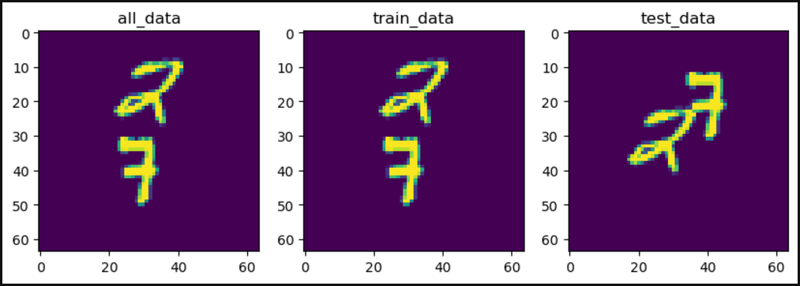
from torchvision.datasets import movingmnist all_data = movingmnist( root="data", split=none ) train_data = movingmnist( root="data", split="train" ) test_data = movingmnist( root="data", split="test" ) def show_images(data, main_title=none): plt.figure(figsize=(10, 8)) plt.suptitle(t=main_title, y=1.0, fontsize=14) for i, image in enumerate(data, start=1): plt.subplot(4, 5, i) plt.tight_layout(pad=1.0) plt.title(i) plt.imshow(image) plt.show() show_images(data=all_data[0].squeeze(), main_title="all_data") show_images(data=train_data[0].squeeze(), main_title="train_data") show_images(data=test_data[0].squeeze(), main_title="test_data")
登录后复制
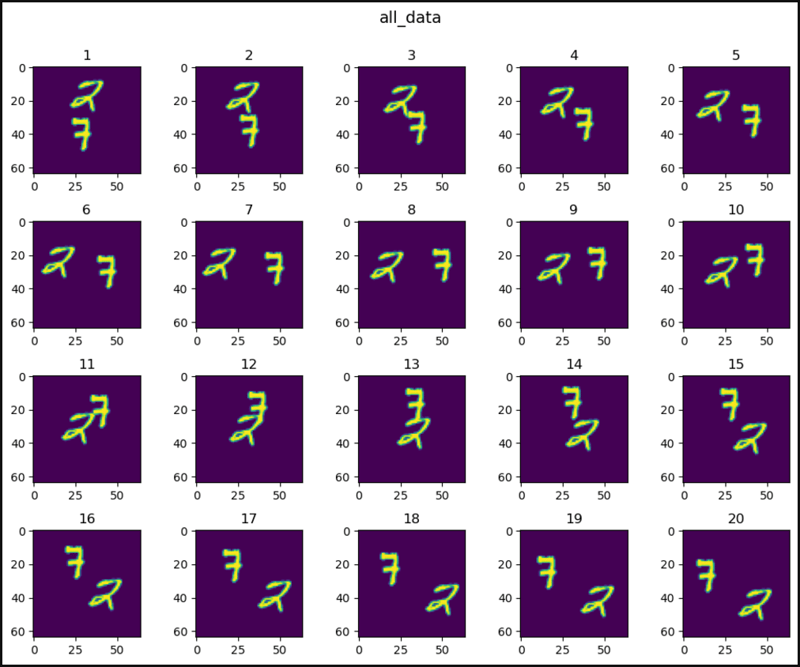
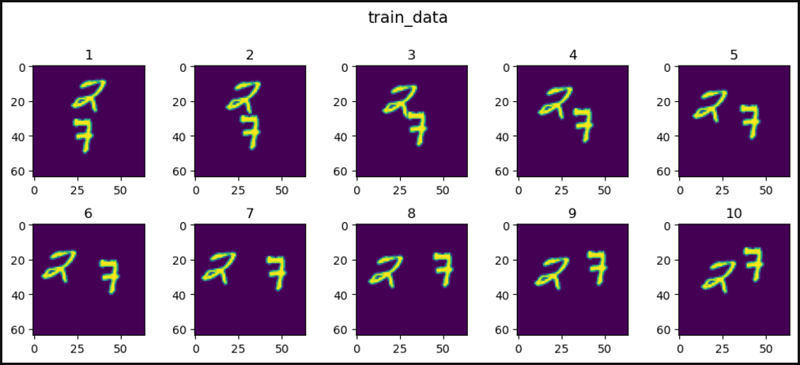
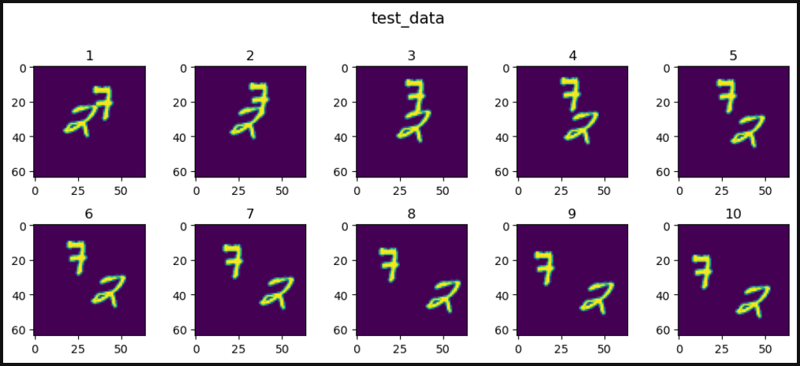
from torchvision.datasets import movingmnist all_data = movingmnist( root="data", split=none ) train_data = movingmnist( root="data", split="train" ) test_data = movingmnist( root="data", split="test" ) import matplotlib.pyplot as plt def show_images(data, main_title=none): plt.figure(figsize=(10, 8)) plt.suptitle(t=main_title, y=1.0, fontsize=14) col = 5 for i, image in enumerate(data, start=1): plt.subplot(4, 5, i) plt.tight_layout(pad=1.0) plt.title(i) plt.imshow(image.squeeze()[0]) if i == col: break plt.show() show_images(data=all_data, main_title="all_data") show_images(data=train_data, main_title="train_data") show_images(data=test_data, main_title="test_data")
登录后复制
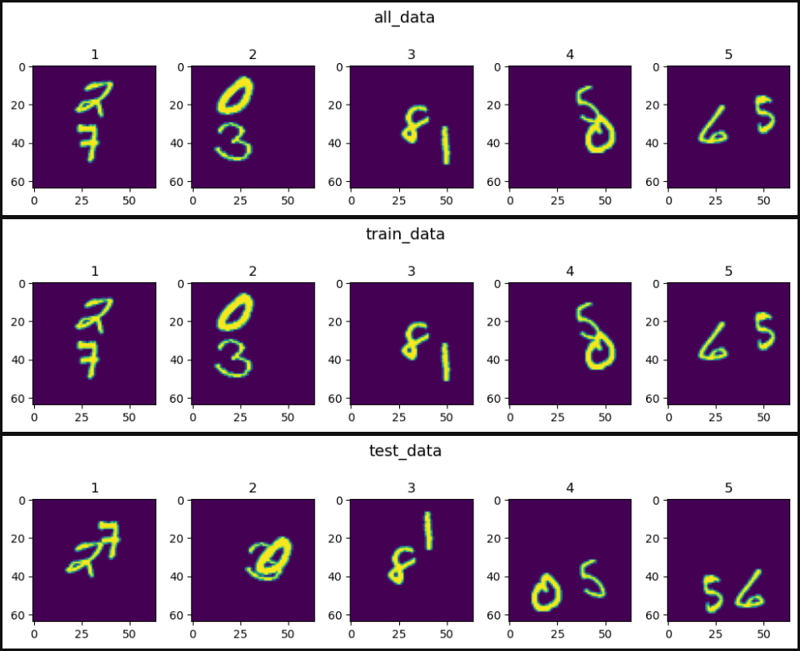
from torchvision.datasets import movingmnist import matplotlib.animation as animation all_data = movingmnist( root="data" ) import matplotlib.pyplot as plt from ipython.display import html figure, axis = plt.subplots() # ↓ ↓ ↓ ↓ ↓ ↓ ↓ ↓ ↓ ↓ `artistanimation()` ↓ ↓ ↓ ↓ ↓ ↓ ↓ ↓ ↓ ↓ images = [] for image in all_data[0].squeeze(): images.append([axis.imshow(image)]) ani = animation.artistanimation(fig=figure, artists=images, interval=100) # ↑ ↑ ↑ ↑ ↑ ↑ ↑ ↑ ↑ ↑ `artistanimation()` ↑ ↑ ↑ ↑ ↑ ↑ ↑ ↑ ↑ ↑ # ↓ ↓ ↓ ↓ ↓ ↓ ↓ ↓ ↓ `funcanimation()` ↓ ↓ ↓ ↓ ↓ ↓ ↓ ↓ ↓ # def animate(i): # axis.imshow(all_data[0].squeeze()[i]) # # ani = animation.funcanimation(fig=figure, func=animate, # frames=20, interval=100) # ↑ ↑ ↑ ↑ ↑ ↑ ↑ ↑ ↑ `funcanimation()` ↑ ↑ ↑ ↑ ↑ ↑ ↑ ↑ ↑ # ani.save('result.gif') # save the animation as a `.gif` file plt.ioff() # hide a useless image # ↓ ↓ ↓ ↓ ↓ ↓ ↓ ↓ show animation ↓ ↓ ↓ ↓ ↓ ↓ ↓ ↓ html(ani.to_jshtml()) # animation operator # html(ani.to_html5_video()) # animation video # ↑ ↑ ↑ ↑ ↑ ↑ ↑ ↑ show animation ↑ ↑ ↑ ↑ ↑ ↑ ↑ ↑ # ↓ ↓ ↓ ↓ ↓ ↓ ↓ ↓ ↓ ↓ ↓ ↓ show animation ↓ ↓ ↓ ↓ ↓ ↓ ↓ ↓ ↓ ↓ ↓ ↓ # plt.rcparams["animation.html"] = "jshtml" # animation operator # plt.rcparams["animation.html"] = "html5" # animation video # ↑ ↑ ↑ ↑ ↑ ↑ ↑ ↑ ↑ ↑ ↑ ↑ show animation ↑ ↑ ↑ ↑ ↑ ↑ ↑ ↑ ↑ ↑ ↑ ↑
登录后复制
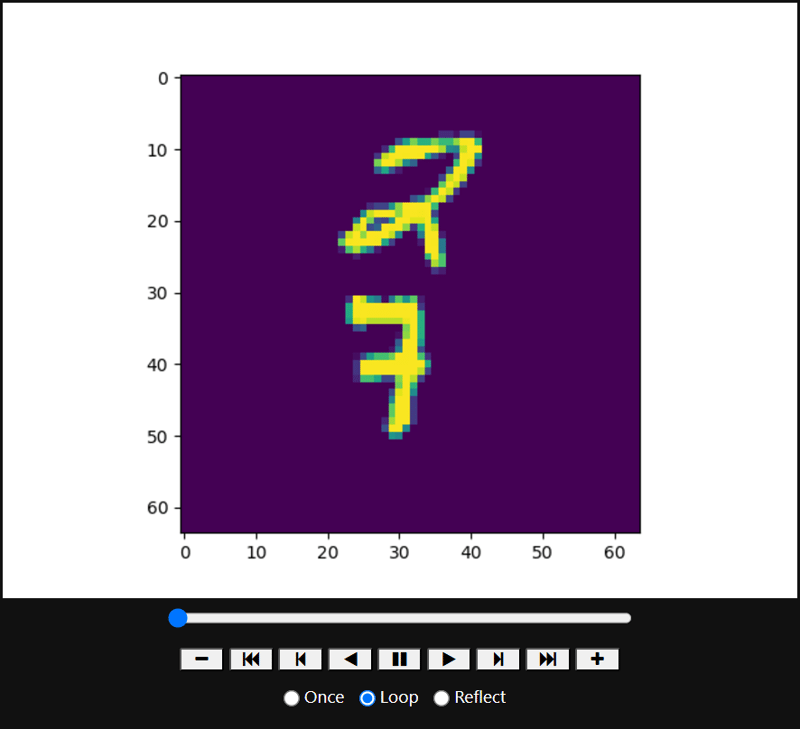
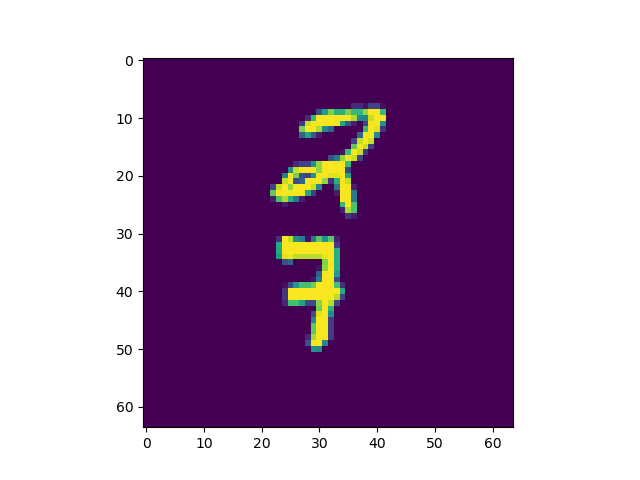
from torchvision.datasets import MovingMNIST from ipywidgets import interact, IntSlider all_data = MovingMNIST( root="data" ) import matplotlib.pyplot as plt from IPython.display import HTML def func(i): plt.imshow(all_data[0].squeeze()[i]) interact(func, i=(0, 19, 1)) # interact(func, i=IntSlider(min=0, max=19, step=1, value=0)) # ↑ ↑ ↑ ↑ ↑ ↑ ↑ ↑ ↑ ↑ Set the start value ↑ ↑ ↑ ↑ ↑ ↑ ↑ ↑ ↑ ↑ plt.show()
登录后复制
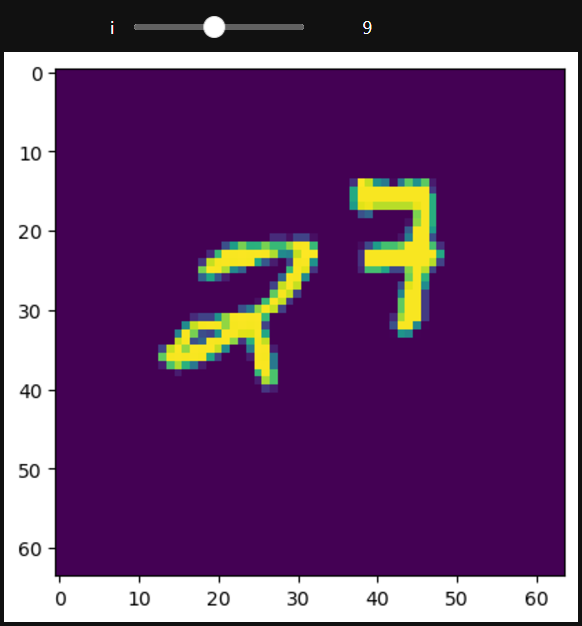
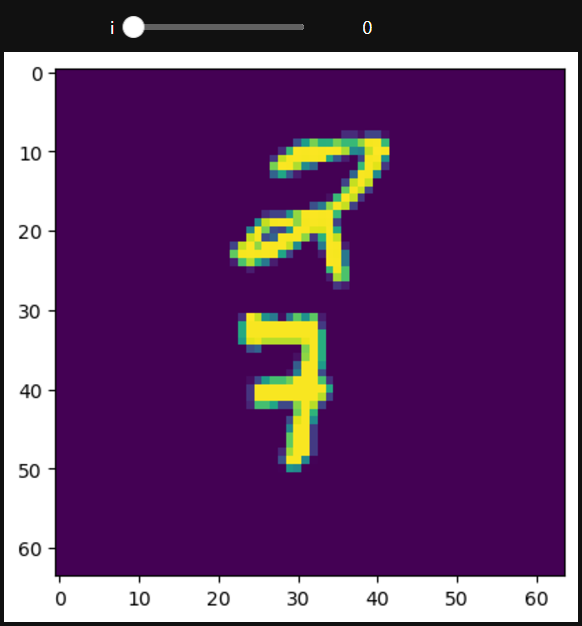
以上就是在 PyTorch 中移动 MNIST的详细内容,更多请关注php中文网其它相关文章!
 微信扫一扫打赏
微信扫一扫打赏
 支付宝扫一扫打赏
支付宝扫一扫打赏

